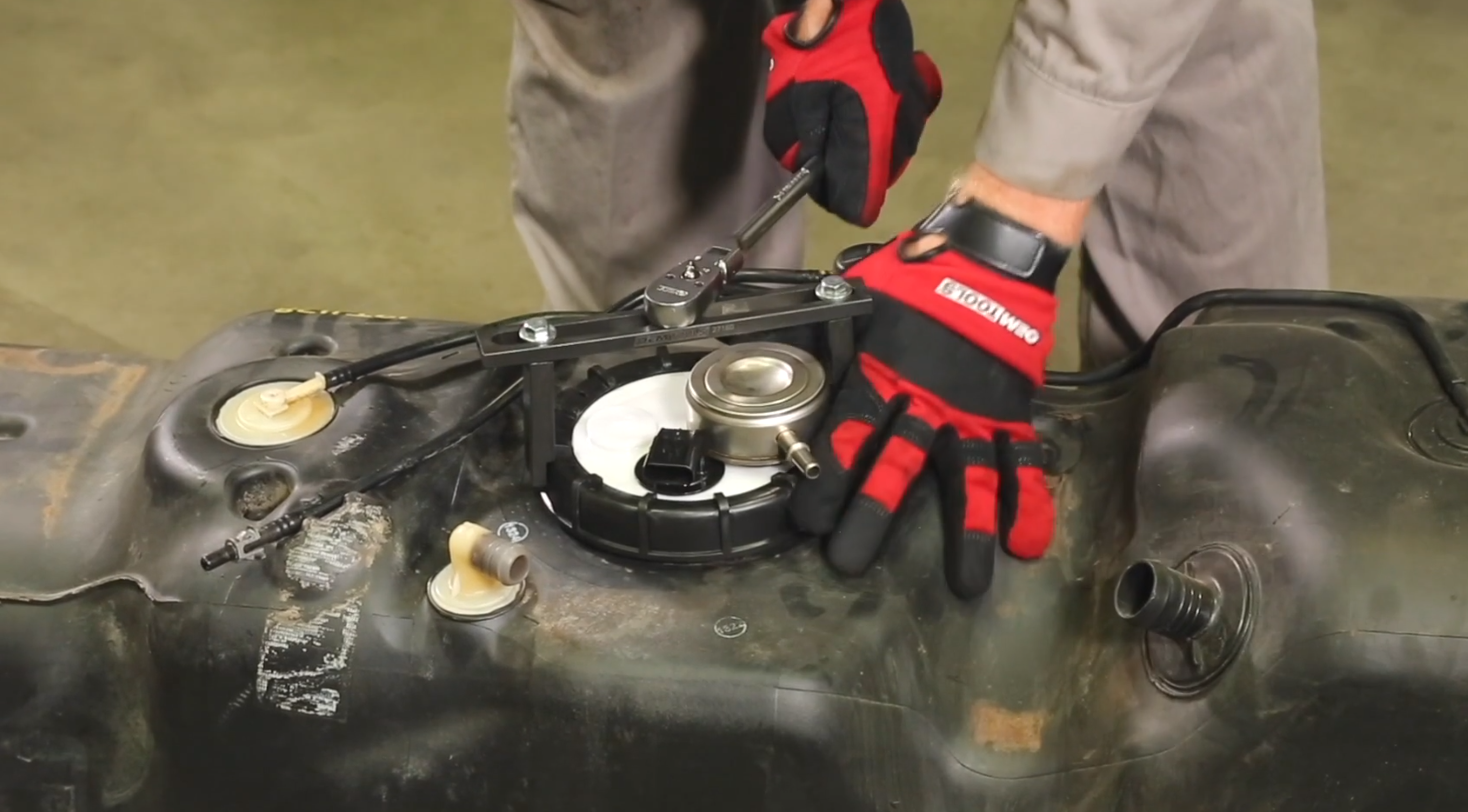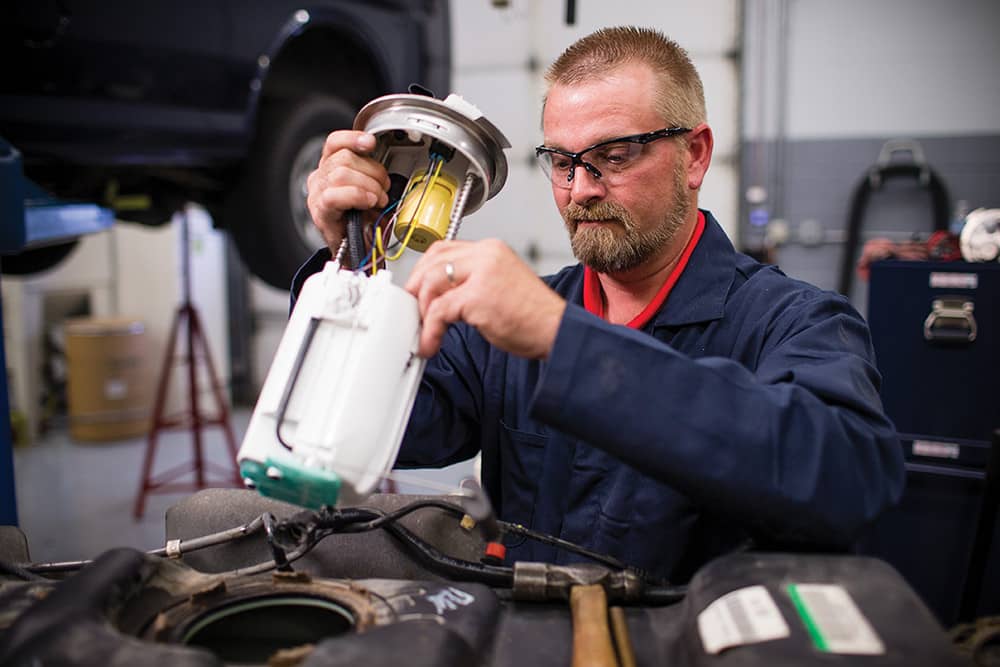Have you ever felt the frustration of your car sputtering on the road or failing to start just when you need it the most? Chances are, you could be dealing with a faulty fuel pump.
Understanding how to replace a fuel pump can save you time, money, and the hassle of relying on a mechanic for every little issue. Imagine the satisfaction of fixing your vehicle on your own, the peace of mind knowing you won’t be stranded, and the pride in mastering a skill that’s not only practical but empowering.
In this guide, we will walk you through the step-by-step process of replacing your fuel pump with ease and confidence. Whether you’re a seasoned DIY enthusiast or a complete beginner, you’ll find everything you need to know right here. Don’t let car troubles hold you back; dive into this article and take control of your vehicle maintenance today.
Signs Of A Failing Fuel Pump
A failing fuel pump can cause many problems. Engine sputtering is one big sign. It happens when driving fast. Loss of power when climbing hills is another sign. The car may stall. Hard starts can mean fuel pump trouble. The car cranks but does not start easily. High-pitched whining from the fuel tank is a bad sign. It often means the pump is failing. Decreased fuel efficiency is also a clue. The car uses more fuel than usual. Watch for engine surges. The car speeds up on its own. These are signs to check the fuel pump.
Tools And Materials Needed
Gather the right tools to replace a fuel pump. You will need a socket set and a wrench. A screwdriver is also needed. Make sure to have a fuel line disconnect tool. It helps with the fuel line. New fuel pump is required too. Don’t forget the gasket for sealing. Have a catch pan ready for spills. Gloves and safety goggles are important for safety. Rags can help with cleaning spills. Always have a fire extinguisher nearby, just in case.
Safety Precautions
Safety is very important. Wear safety goggles to protect your eyes. Use gloves to keep your hands safe. Make sure the car is on a flat surface. This prevents it from rolling. Disconnect the battery to avoid electric shocks. Always use the right tools. Tools should be in good condition. Check for any fuel leaks. Leaks can be dangerous. Work in a well-ventilated area. This helps prevent inhaling fumes.
Keep a fire extinguisher nearby. Avoid open flames and sparks. Fuel is flammable. Double-check connections and hoses. They should be secure. Never smoke while working. It is very risky. Keep children and pets away from the area. This keeps them safe. Stay focused to avoid mistakes.

Credit: www.autozone.com
Locating The Fuel Pump
The fuel pumpis usually inside the fuel tank. It’s near the rear of the car. Open the trunk or back seat to access it. Some cars have an access panel. Remove the panel to see the pump. If there is no panel, you may need to lower the tank. Check your car’s manual for details. Make sure to disconnect the battery first. Safety is very important.
Look for wires and hoses connected to the pump. These must be carefully removed. Use proper tools for disconnection. Keep track of each connection. Remember where they go when you reassemble. Be gentle with each part. Avoid breaking anything.
Preparing Your Vehicle
Always make sure the car is off. Locate the car battery. Use a wrench to loosen the negative cable. Remove the cable from the battery terminal. This step stops any electric current. It is important for your safety. Avoid touching the metal parts. Store the cable away from the battery. This keeps it from reconnecting accidentally. Now, your car is safe to work on.
Find the fuel pump relay in the fuse box. Pull it out carefully. Start the engine and let it run. The engine will stop after a few seconds. This means the fuel pressure is released. Turn the key to off. This step is crucial to avoid fuel spills. Be cautious and work in a well-ventilated space. Now, you are ready to replace the fuel pump.

Credit: www.youtube.com
Removing The Old Fuel Pump
First, make sure the car is on a flat surface. Turn off the engine and let it cool. Find the fuel pump location by checking your car manual. It might be under the back seat or in the trunk. Remove any covers or panels to see the pump. Use a flashlight if it’s dark. Be careful not to damage any parts.
Wear safety gloves before starting. Fuel can be dangerous. Locate the fuel linesconnected to the pump. Use a wrench to loosen the connectors. Hold a container below to catch any fuel drips. Slowly remove the lines one by one. Make sure to label each line for easy reattachment later. Unplug any electrical connectors carefully.
Installing The New Fuel Pump
Position the new fuel pump in its place. Align it with the mounting holes. Use a wrench to tighten the bolts. Make sure the pump is securely fastened. It should not move or wiggle. Double-check each bolt for tightness.
Reattach the fuel lines to the new pump. Ensure each line is connected tightly. Look for any leaks. Connect all electrical connectors. They should click into place. Check each connector for a snug fit. Secure all lines and connectors properly. This prevents future issues.

Credit: carterengineered.com
Testing The New Fuel Pump
Reconnecting the Battery:Connect the battery again. Ensure the cables are tight. Loose cables can cause issues. Turn on the ignition. Listen for the fuel pump sound. It should hum softly. This means it’s working.
Checking for Leaks:Inspect the fuel lines carefully. Look for any wet spots. Wet spots indicate leaks. Leaks can be dangerous. Fix any leaks immediately. Use a flashlight if needed. Check under the car too.
Ensuring Proper Functionality:Start the engine. It should start smoothly. If it sputters, there might be a problem. Listen to the engine closely. It should sound normal. Drive a short distance. Check for any unusual noise. Ensure smooth acceleration.
Troubleshooting Common Issues
Car not starting can mean a bad fuel pump. Listen for strange noisesfrom the fuel tank. A humming sound may signal trouble. Sometimes, cars stall or lose power. This might mean the pump is failing. Check the fuel pressure. Low pressure can cause problems. Use a gauge to test this.
Look for leaks under the car. Gasoline leaks are a bad sign. Always check the fuel filter. A clogged filter can mimic pump issues. Inspect wires and connectors. Loose wires can stop the pump from working. A bad relay might also be the culprit. Replace it if necessary.
Maintenance Tips
Regular checks keep your car running smoothly. Always check the fuel pump for leaks. Leaks can cause serious problems. Clean the pump area to prevent dirt buildup. Dirt can harm the pump. Use the right tools for cleaning. This saves time and effort. Inspect the pump for any signs of damage. Fix small issues quickly. This prevents bigger problems later. Replace worn-out parts to keep the pump working well. Lubricate moving parts to ensure smooth operation. This keeps the pump healthy. Follow the manufacturer’s guidelines for maintenance. They offer the best advice for your car.
Conclusion
Replacing a fuel pump is straightforward with the right steps. Follow the guide closely, and you’ll get the job done. Ensure safety by using proper tools and techniques. Check for leaks after installation to prevent issues. Regular maintenance helps your car run smoothly.
Keep your vehicle manual handy for reference. Don’t rush; patience leads to success. Seek professional help if unsure. Your car’s performance depends on a well-functioning fuel pump. Stay attentive to signs of wear. Now, you’re equipped to handle a fuel pump replacement confidently.
Happy driving!
